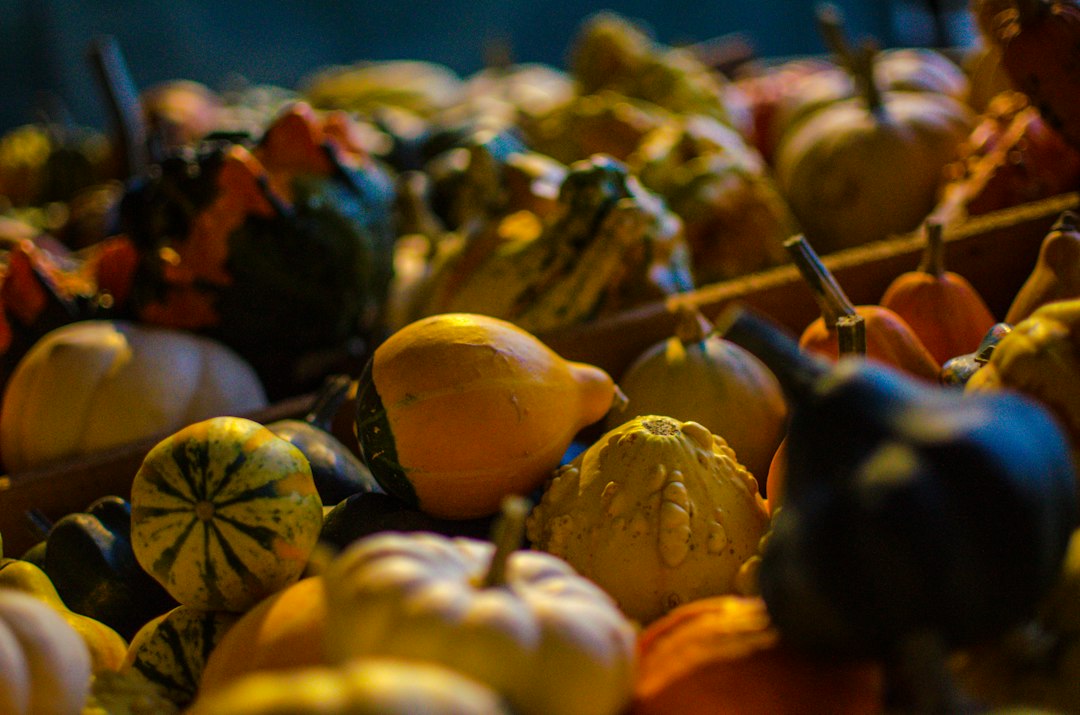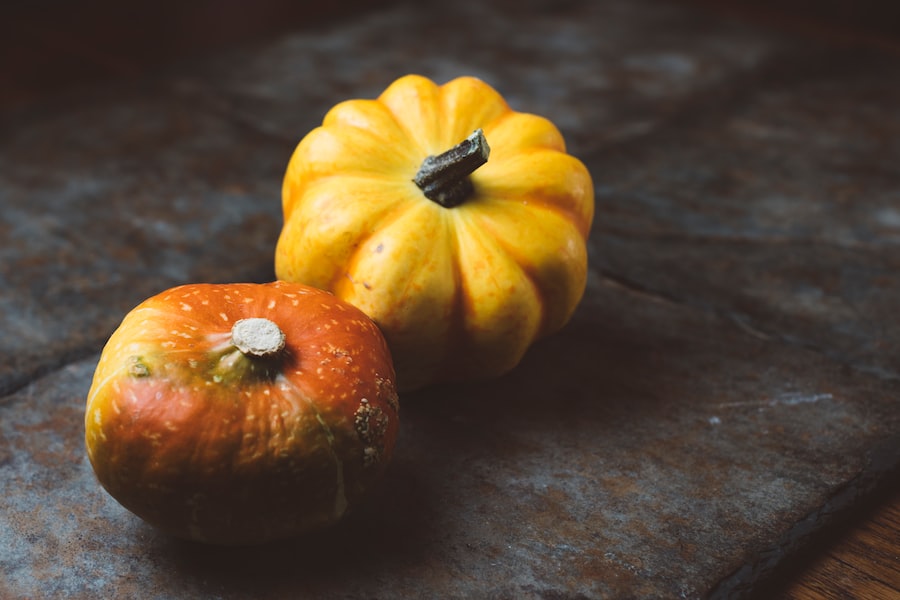Ready to Harvest: How to Tell When Acorn Squash is Ripe

Acorn squash is a popular winter squash known for its sweet and nutty flavor. It is a versatile vegetable that can be used in a variety of dishes, from soups and stews to roasted side dishes. Acorn squash is also a great source of vitamins A and C, as well as dietary fiber. Due to its popularity in cooking, it is important to know when acorn squash is ripe for optimal taste and texture.
Key Takeaways
- Acorn squash is a winter squash with a distinctive shape and sweet, nutty flavor.
- Understanding the growth cycle of acorn squash is important for determining when it is ripe.
- Factors that affect acorn squash ripeness include temperature, sunlight, and water.
- Visual signs of acorn squash ripeness include a deep green color and a hard, dry stem.
- The touch test involves pressing the skin of the squash to check for firmness and resistance.
Understanding the Growth Cycle of Acorn Squash
Acorn squash goes through several stages of growth before it is ready to be harvested. It starts as a small seedling, then grows into a vine with large leaves. As the plant continues to grow, it produces flowers that eventually turn into small green fruits. These fruits will continue to grow and mature until they reach their full size and ripeness.
Monitoring the growth cycle of acorn squash is important for optimal ripeness. Harvesting too early can result in underripe squash that lacks flavor and sweetness. On the other hand, waiting too long to harvest can lead to overripe squash that is mushy and bland. By understanding the growth stages of acorn squash, you can ensure that you harvest it at the perfect time for the best taste and texture.
Factors That Affect Acorn Squash Ripeness
Several environmental factors can affect the ripeness of acorn squash. Temperature plays a crucial role in the development of the fruit. Acorn squash prefers warm temperatures between 70-85°F (21-29°C) during the day and cooler temperatures around 50-60°F (10-15°C) at night. Extreme heat or cold can stunt the growth of the fruit or cause it to ripen prematurely.
Sunlight is another important factor in acorn squash ripeness. The plant needs at least 6-8 hours of direct sunlight each day to produce healthy and flavorful fruits. Lack of sunlight can result in underripe squash that lacks sweetness and flavor.
Monitoring these environmental factors is crucial for optimal acorn squash ripeness. By providing the right temperature and sunlight conditions, you can ensure that your squash develops to its full potential.
Visual Signs of Acorn Squash Ripeness
| Visual Signs of Acorn Squash Ripeness |
|---|
| Color: Dark green to dark orange |
| Texture: Firm and smooth skin |
| Weight: Heavy for its size |
| Sound: Hollow sound when tapped |
| Stem: Dry and brown |
Visual cues are an important indicator of acorn squash ripeness. When the squash is fully ripe, its skin will turn a deep green color. The skin should also be hard and free from blemishes or soft spots. Additionally, the stem should be dry and brown.
Texture is another visual cue to look for. Ripe acorn squash should have a smooth and firm skin. If the skin feels soft or wrinkled, it may be a sign that the squash is overripe or starting to spoil.
Paying attention to these visual cues is important for optimal acorn squash ripeness. By selecting squash with the right color, texture, and stem condition, you can ensure that you are getting the best-tasting squash.
Touch Test: How to Determine If Acorn Squash is Ripe
The touch test is a simple method for determining acorn squash ripeness. To perform the touch test, gently press your finger against the skin of the squash. If it feels firm and does not give under pressure, it is likely ripe. If it feels soft or gives easily, it may be underripe or overripe.
The touch test should be used in conjunction with visual cues for optimal acorn squash ripeness. By combining these methods, you can ensure that you are selecting squash that is at its peak flavor and texture.
Sound Test: Another Way to Test Acorn Squash Ripeness

The sound test is another method for determining acorn squash ripeness. To perform the sound test, gently tap the skin of the squash with your knuckles. If it produces a hollow sound, it is likely ripe. If it produces a dull or thud-like sound, it may be underripe or overripe.
The sound test should be used in conjunction with other methods for optimal acorn squash ripeness. By using multiple methods, you can ensure that you are selecting squash that is at its peak ripeness.
Smell Test: How to Use Your Nose to Check Acorn Squash Maturity
The smell test is another method for determining acorn squash ripeness. Ripe acorn squash should have a sweet and slightly earthy aroma. If the squash has a strong or unpleasant smell, it may be overripe or starting to spoil.
The smell test should be used in conjunction with other methods for optimal acorn squash ripeness. By using your sense of smell, you can further confirm the ripeness of the squash.
Time to Harvest: When to Pick Acorn Squash
Based on the above methods, the optimal time to harvest acorn squash is when it has reached its full size and has a deep green color. The skin should be hard and free from blemishes or soft spots. The stem should be dry and brown.
Harvesting at the right time is important for optimal taste and texture. If you harvest too early, the squash may lack flavor and sweetness. If you wait too long, the squash may become mushy and bland.
Post-Harvest Care: How to Store Acorn Squash
After harvesting acorn squash, it is important to store it properly to maintain its optimal taste and texture. The ideal storage conditions for acorn squash are cool (around 50-55°F or 10-13°C), dry, and well-ventilated. Avoid storing it in direct sunlight or in areas with high humidity.
Acorn squash can be stored for several weeks if stored properly. Check the squash regularly for any signs of spoilage, such as soft spots or mold. If you notice any signs of spoilage, it is best to use or discard the squash.
Proper storage is crucial for maintaining the quality of acorn squash after harvest. By following these best practices, you can enjoy your harvest for weeks to come.
Delicious Ways to Enjoy Ripe Acorn Squash
Ripe acorn squash is incredibly versatile and can be used in a variety of delicious recipes. One popular way to enjoy acorn squash is by roasting it. Simply cut the squash in half, remove the seeds, and place it cut-side down on a baking sheet. Roast in the oven at 400°F (200°C) for about 45 minutes, or until the flesh is tender. You can then scoop out the flesh and enjoy it as a side dish or use it as a base for other recipes.
Another delicious way to enjoy ripe acorn squash is by making a soup or stew. Simply sauté some onions and garlic in a pot, then add diced acorn squash, vegetable broth, and your choice of herbs and spices. Simmer until the squash is tender, then blend until smooth for a creamy and flavorful soup.
Acorn squash can also be used in sweet recipes, such as pies or breads. Simply puree the cooked squash and use it as a substitute for pumpkin in your favorite recipes.
The possibilities are endless when it comes to cooking with ripe acorn squash. Get creative in the kitchen and enjoy the deliciousness of this versatile winter vegetable.
If you’re wondering how to determine when acorn squash is ripe, you might find this article on Lawn World’s website helpful. They provide a comprehensive guide on identifying the perfect time to harvest acorn squash, ensuring that you enjoy its delicious flavor and optimal nutritional value. Check out their informative article here for expert tips and insights on acorn squash ripeness.



